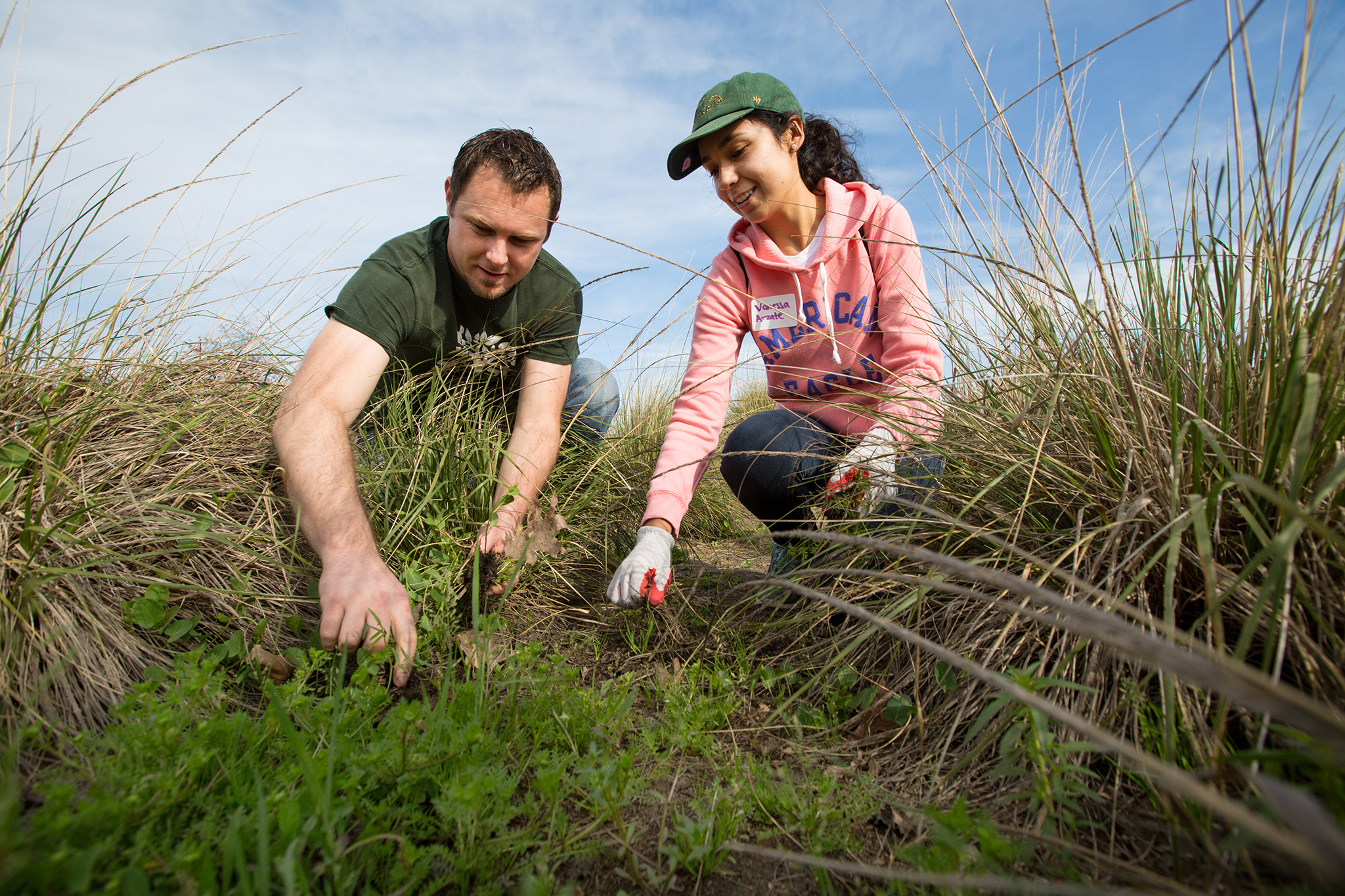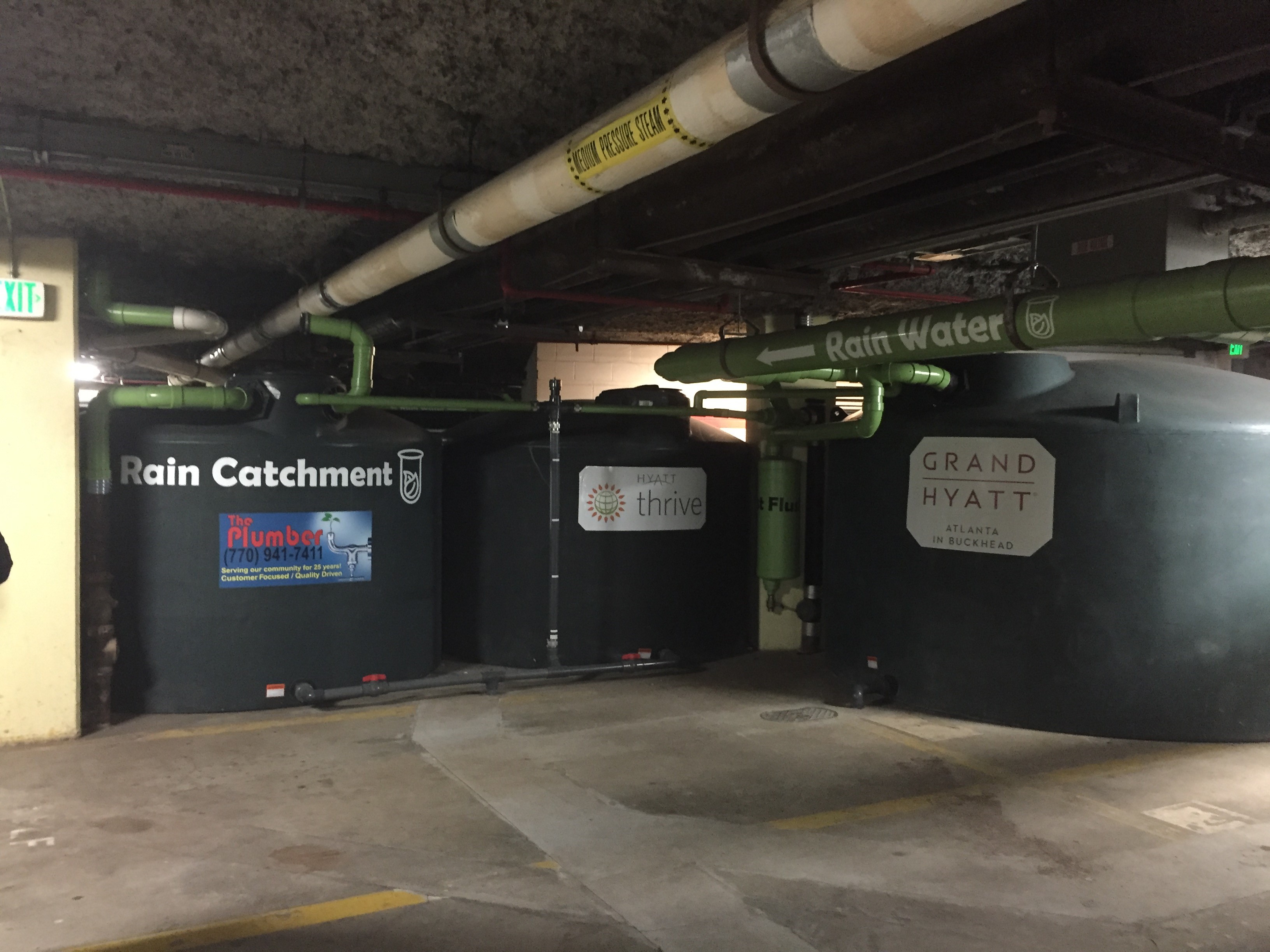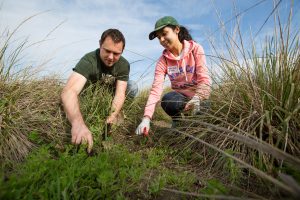
Sacramento State University (California) Sustainability Manager Ryan Todd works with student volunteer Vanessa Arzate to maintain an on-campus rain garden, one of 24 low-impact developments installed throughout University grounds. (Jessica Vernone/Sacramento State University)
On the main campus of California State University, Sacramento (Sacramento State), efforts to reduce stormwater runoff pollution make a big difference for water quality.
Runoff from the campus, which hugs the west bank of the American River, travels about 11 km (7 mi) downstream before it mingles with the Sacramento River, ultimately emptying into the Pacific Ocean via San Francisco Bay. In the past, stormwater runoff routinely was collected and pumped directly into the river, carrying sediment and metal loads with it.
Thanks to a $3.2 million partnership between the University’s Office of Water Programs (OWP), its Facilities Management team, the City of Sacramento, and the California State Water Resources Control Board, Sacramento State is re-examining the ways it handles rain — and after just 2 years, results have been promising.
Since June 2015, engineers have installed 24 low-impact development devices in seven on-campus sites. Today, sediment and metal loads flowing into the American River have dropped by 60% to 90%.
Low impact, high output
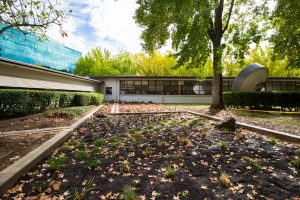
Low-impact developments installed as part of the Sacramento State University Office of Water Programs’ push to control runoff pollution have resulted in 60% to 90% lower sediment and metal loads that end up in critical waterways near campus. (Jessica Vernone/Sacramento State University)
Low-impact development (LID) refers to a subset of green infrastructure small enough to implement at the site level. LID aims to imitate native hydrologic conditions of the land it occupies. On the Sacramento State campus, installations include bioretention planters, rain gardens, bioswales, porous pavements, dry wells, and more.
The devices repurpose potentially harmful runoff to nurture plants on campus and help refill the university’s groundwater supplies as drought-related stresses on California aquifers remain problematic.
“The whole project is about protecting the American River,” Maureen Kerner, a research engineer with the OWP, told Sacramento State News. “The LID project has gone a long way in promoting the use of sustainable stormwater practices locally and regionally. Several other colleges and universities are mimicking our project and installing stormwater planters and porous pavement.”
The LID installations can collect and filter 10.9 million L (2.9 million gal) of stormwater each year, reducing the university’s dependence on public aquifers while enhancing the beauty of the campus and minimizing its effect on local water quality.
Stormwater 101
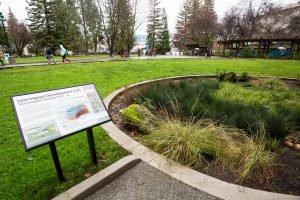
Educational signage placed near low-impact developments on seven campus sites teaches passersby about the mechanics at work to curb runoff pollution, as well as the construction processes that led to each installation. A self-guided walking tour accessible via smartphone acts as a supplementary tool.
(Jessica Vernone/Sacramento State University)
Owing to its placement on a university campus, the system of LID devices also assumes a teaching role.
OWP representatives placed informative signage at each of the seven installation locations. Each sign documents how the devices work to capture stormwater, their construction process, and lists an inventory of plants at work within each installation.
“The plants are an important component of LID, so we listed them all in case people visiting campus want something similar for their own property,” Kerner said.
Visitors can access the same information on their mobile devices through a self-guided walking tour, which was developed as part of the project by Sacramento State computer science students.
Regional stormwater players already have recognized the project’s educational value. In 2015, the Sacramento section of the American Society of Civil Engineers awarded the LID system its Urban Development Project of the Year Award. Last year, the program also took home the California Stormwater Quality Association’s Outstanding Best Management Practice Implementation Project title.
Despite the success of the LID system, the Sacramento State OWP does not intend to rest on its laurels.
“You will see many more devices pop up around campus as the university implements its master plan to expand green-space connectivity and better manage stormwater through more aesthetic and sustainable practices,” Kerner said.
For more information, visit the Sacramento State Office of Water Programs’ website.

